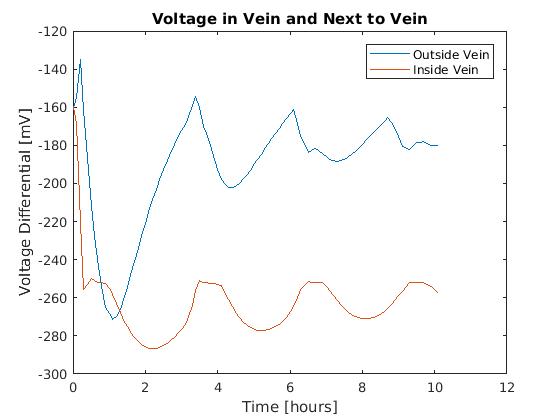Behavior in Veins in Bactieral Biofilm
I have developed the first two-dimensional model of biofilm communication through charged ions. The system uses partial differential equations to represent this complex behavior. We have been looking to find physical phenomena that requires a two-dimensional model to explain it. This is phenomena seen in the experiments that are linked to a spacial position.
One such phenomena is the behavior of veins that arises in the biofilm experiments. These are regions of the biofilm often near the exterior in which bacteria show a phenotypic change and are confined to regions that look like thin veins. The bacteria in the veins express more motility genes, which means that they are more likely to leave the colony in search of new territory to colonize.
In experiments, we see that the bacteria in the veins do not oscillate with the rest of the biofilm. In fact they more likely to be hyperpolarized and have opposite oscillations to the nearby bacteria. I was able to find a prospective model that explains this behavior. In my model the bacteria within veins grow faster and run out of nutrients quicker causing them to be more hyperpolarized. When bacteria nearby release potassium the vein bacteria will depolarize, which leads to the inverted oscillation pattern.
Below is an example of the pattern from the model. You can see the inverted oscillations pattern.
